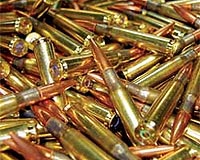| . |  |
. |
Washington (AFP) March 18, 2011 Two US aerospace firms are jostling with global rivals to win a $11-12 billion Indian fighter jet contract, hoping a nascent US-India strategic partnership can help seal the deal. As defense contracts go, Delhi's bid to replace 126 aging MiG fighters is large, but hardly a show stopper. Still, in an industry where billion dollar contracts are commonplace, the project is turning heads. "It is not the price," explained Ron Somers, president of the US-India Business Council, "the $11 billion is great, but this is geopolitical." India, after 50 years of depending on Russian fighter technology, is casting around for a new partner. To play that role US firms Lockheed Martin and Boeing are pitched against Europe's Eurofighter, France's Dassault, Sweden's Saab and Russia's RSK MiG. Whichever company and country wins, the deal could help cement military and strategic ties with one of the world's fastest emerging powers. "You are talking about aligning how you work together for the next two generations," Somers told AFP. Experts say that the Indian Air Force, by looking beyond Russia's MiG-21s, could remove one of the last vestiges of Cold War power politics and set the stage for a revamp of India's military outlook. "The supply of the MiG-21 established the Soviet Union as a close ally of the Indian government in the '60s and it led to the 1971 Indo-Soviet friendship treaty," said Sunil Dasgupta, an India military expert and lecturer at the University System of Maryland. "Whichever aircraft is chosen is going to be the mainstay of the Indian Air Force for maybe 30 years." The training and maintenance contacts that come with that could prove invaluable in boosting ties with India's powerful military. "Whoever supplies this kind of equipment is able to get a very deep 'in' into the system," said Dasgupta, who recently co-authored a book on modernizing India's military. Somers -- who is helping lobby for Lockheed Martin and Boeing bids -- hopes the US trump card will be rapidly developing strategic and military ties between the two countries. Relations between Delhi and Washington, characterized by mistrust and occasional hostility during the Cold War, were reset by former US president Bill Clinton in the 1990s and invigorated by his successor George W. Bush. During a visit to India last year President Barack Obama pushed further still, backing India's quest for a permanent UN Security Council seat. He also announced the United States would sell $5 billion worth of military equipment to India, including ten Boeing C-17 transporters and General Electric 404 engines. But the two nations remain at odds over close US relations with India's rival Pakistan and military ties are limited. "If the Indians were to chose and American product then they are going to have to make a political commitment to the United States as well," Dasgupta said explaining some of the program's past delays. "You can see that the Indians are skittish about making that kind of political commitment without the United States stepping up first." But Boeing, which is offering its F/A-18IN Super Hornet, expects the delay-plagued project to take a decisive step forward as soon as next month, when a shortlist of contenders could be drawn up. "Indian military officials have been quoted recently saying they want to make an initial downselect decision possibly as soon as next month," said Boeing spokeswoman Mary Ann Brett. Whatever the technical benefits of Boeing's Super Hornet or Lockheed's F-16, mechanics and design will only go so far. One of the key stumbling blocks in any US bid will be reaching an agreement on how much sensitive technology will be transferred to India, and how much can be manufactured inside the country. The problem, Dasgupta said, is that "Americans want to sell a product and the Indians want access to technology." That means diplomats and politicians, rather than engineers and military planners may ultimately decide who wins and loses. "We believe we have met the terms of the RFP (request for proposal)," said Lockheed's Jack Giese. "All we can do now is present (the project) in the field, and provide the info they need." "After that it becomes a government to government question."
Share This Article With Planet Earth
Related Links The Military Industrial Complex at SpaceWar.com Learn about the Superpowers of the 21st Century at SpaceWar.com
 GD Small Manufactures One Billion Rounds Of Ammunition For US Army
GD Small Manufactures One Billion Rounds Of Ammunition For US ArmySt Petersburg FL (SPX) Mar 18, 2011 General Dynamics Ordnance and Tactical Systems, a business unit of General Dynamics (NYSE: GD), has achieved a significant milestone in producing one billion rounds of ammunition in support of the U.S. Army's Second Source Small Caliber Ammunition program. General Dynamics was awarded a five-year contract by the Army in August 2005 to produce various types of 5.56mm, 7.62mm and .50 caliber ... read more |
|
| The content herein, unless otherwise known to be public domain, are Copyright 1995-2010 - SpaceDaily. AFP and UPI Wire Stories are copyright Agence France-Presse and United Press International. ESA Portal Reports are copyright European Space Agency. All NASA sourced material is public domain. Additional copyrights may apply in whole or part to other bona fide parties. Advertising does not imply endorsement,agreement or approval of any opinions, statements or information provided by SpaceDaily on any Web page published or hosted by SpaceDaily. Privacy Statement |